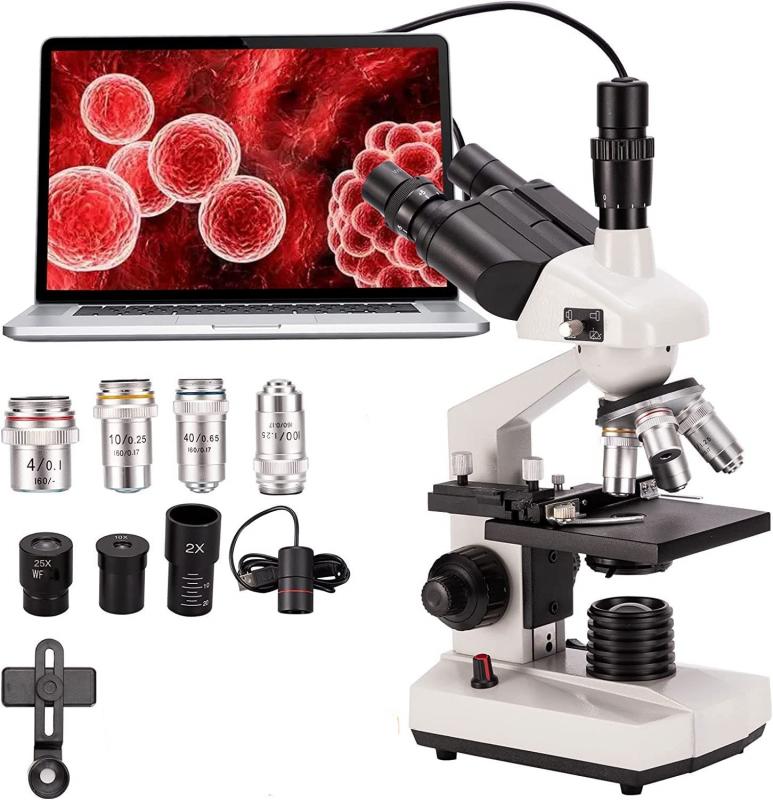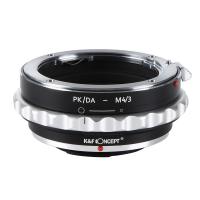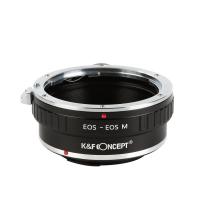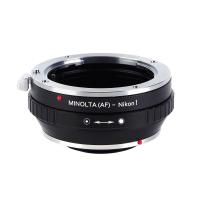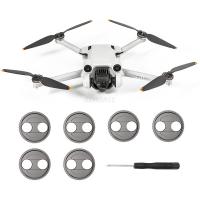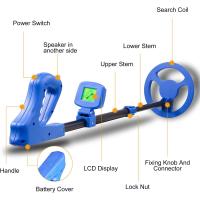What Are The Mechanical Parts Of Microscope ?
The mechanical parts of a microscope typically include the base, arm, stage, focus knobs, condenser, objective lenses, eyepiece, and illuminator.
1、 Objective lens
The objective lens is one of the key mechanical parts of a microscope. It is responsible for gathering light from the specimen and forming a magnified image. The objective lens is typically located at the bottom of the microscope's body tube and is available in various magnification powers, such as 4x, 10x, 40x, and 100x.
The objective lens consists of multiple glass elements that are carefully designed and arranged to minimize aberrations and improve image quality. These elements include convex lenses, concave lenses, and apertures. The convex lenses converge the light rays, while the concave lenses help correct any distortions. The apertures control the amount of light entering the lens, allowing for better contrast and resolution.
In recent years, there have been advancements in objective lens technology. One notable development is the introduction of high numerical aperture (NA) lenses. NA refers to the ability of the lens to gather light and resolve fine details. High NA lenses have improved resolution and allow for clearer and more detailed images. Additionally, there have been advancements in lens coatings to reduce reflections and improve light transmission, resulting in brighter and sharper images.
Another recent development is the use of specialized objective lenses for specific applications. For example, there are objective lenses designed for fluorescence microscopy, which allow for the visualization of specific molecules or structures within a specimen. These lenses are optimized to transmit specific wavelengths of light and filter out unwanted signals.
In conclusion, the objective lens is a crucial mechanical part of a microscope. With advancements in lens technology, such as high NA lenses and specialized lenses for specific applications, microscopes are now capable of producing clearer, more detailed, and more specialized images.
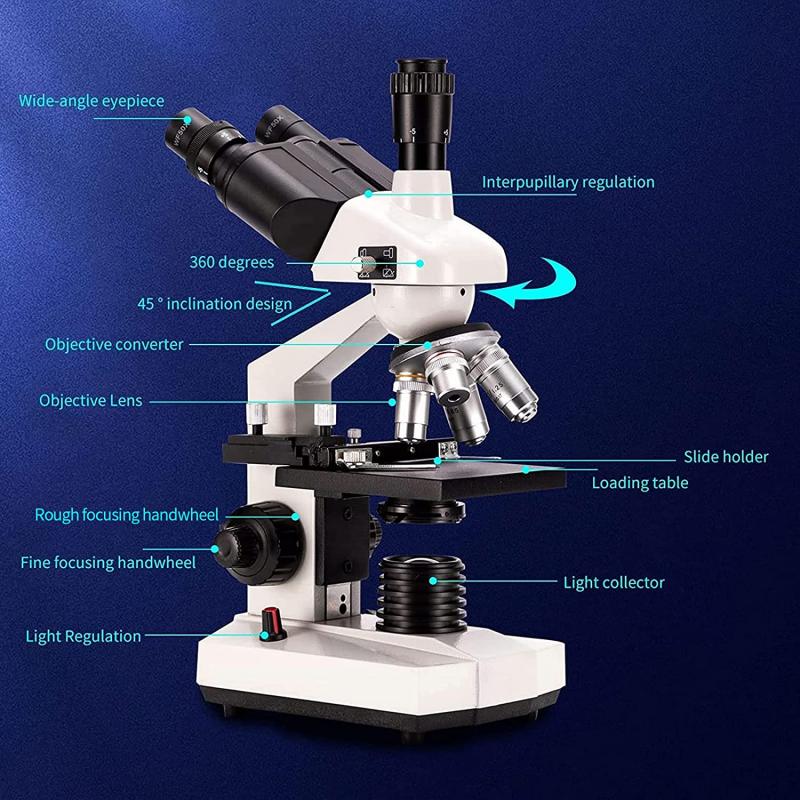
2、 Eyepiece lens
The mechanical parts of a microscope are essential components that enable the instrument to function properly and provide accurate magnification and visualization of microscopic specimens. One of the key mechanical parts is the eyepiece lens, also known as the ocular lens.
The eyepiece lens is located at the top of the microscope and is the part through which the viewer looks to observe the specimen. It is typically a combination of multiple lenses that work together to magnify the image produced by the objective lens. The eyepiece lens usually provides a magnification of 10x, although higher magnifications are also available.
In recent years, there have been advancements in eyepiece lens technology. One notable development is the introduction of digital eyepiece lenses. These lenses incorporate a built-in camera that allows users to capture images and videos of the observed specimen directly through the microscope. This feature has revolutionized microscopy by enabling easy documentation and sharing of microscopic findings.
Additionally, some modern microscopes now offer adjustable eyepiece lenses. These lenses can be adjusted to accommodate the viewer's individual eyesight, providing a more comfortable and precise viewing experience.
Overall, the eyepiece lens remains a crucial mechanical part of a microscope, allowing users to visualize and analyze microscopic specimens. With the advent of digital and adjustable eyepiece lenses, microscopy has become more versatile and user-friendly, opening up new possibilities for scientific research, education, and medical diagnostics.

3、 Stage
The stage is one of the essential mechanical parts of a microscope. It is a flat platform where the specimen is placed for observation. The stage typically consists of a metal or glass plate with a hole in the center to allow light to pass through. The specimen is usually mounted on a glass slide and secured onto the stage using stage clips or a mechanical stage.
In traditional microscopes, the stage is manually adjusted using knobs to move the specimen horizontally (x-axis) and vertically (y-axis). However, with advancements in technology, many modern microscopes now come equipped with motorized stages that can be controlled electronically. This allows for more precise and automated movement of the specimen, making it easier to navigate and focus on specific areas of interest.
Additionally, some microscopes also feature a mechanical stage that allows for precise control of the specimen's position. This is particularly useful when examining larger specimens or when conducting time-lapse experiments. The mechanical stage typically consists of two knobs that control the movement of the specimen in both the x and y directions. This enables the user to precisely position the specimen under the objective lens for observation.
Overall, the stage is a crucial mechanical component of a microscope as it provides a stable platform for holding and manipulating the specimen. Whether manually adjusted or motorized, the stage allows for precise positioning and movement of the specimen, enabling detailed examination and analysis.
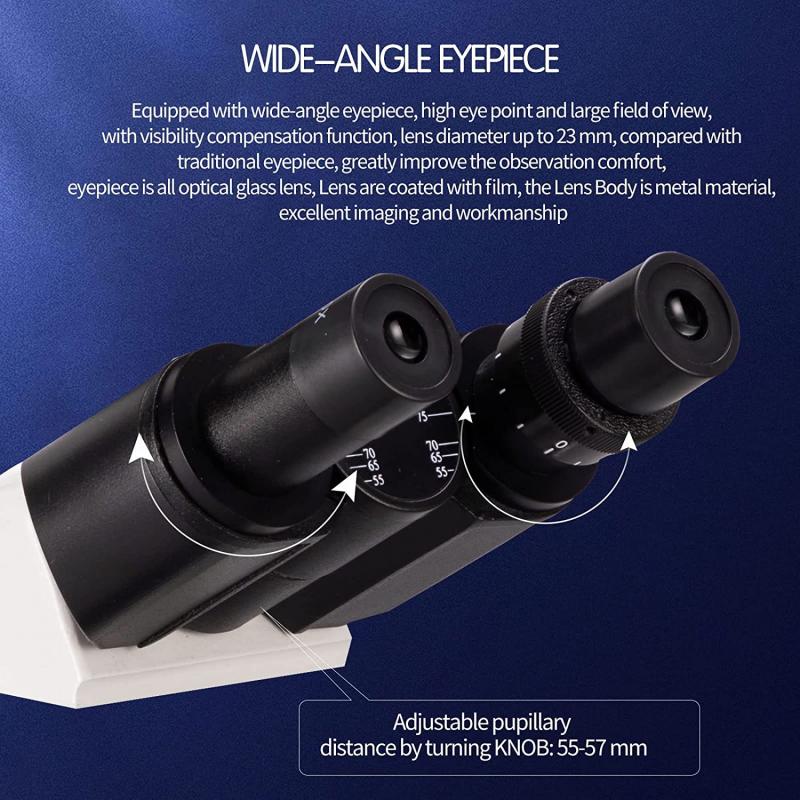
4、 Condenser
The condenser is an essential mechanical part of a microscope that plays a crucial role in focusing and directing light onto the specimen. It is located beneath the stage and above the light source. The primary function of the condenser is to gather and concentrate light onto the specimen, enhancing the image quality and clarity.
Traditionally, the condenser consists of several mechanical components. These include the condenser lens, iris diaphragm, and condenser aperture. The condenser lens is responsible for focusing the light onto the specimen, ensuring that it is evenly distributed and properly illuminated. The iris diaphragm controls the amount of light passing through the condenser, allowing for adjustments in brightness and contrast. The condenser aperture, also known as the condenser stop, controls the numerical aperture of the condenser, which affects the resolution and depth of field.
In recent years, advancements in microscope technology have led to the development of more sophisticated condenser designs. For example, some modern microscopes now feature an adjustable condenser, allowing users to fine-tune the focus and illumination settings. Additionally, some condensers now incorporate phase contrast or darkfield capabilities, enabling the visualization of transparent or unstained specimens with greater clarity.
Overall, the condenser is a critical mechanical component of a microscope that significantly impacts the quality of the observed image. Its ability to gather and concentrate light onto the specimen enhances the resolution, contrast, and overall visibility. With ongoing advancements in microscope technology, the condenser continues to evolve, providing researchers and scientists with improved imaging capabilities and greater flexibility in their observations.
